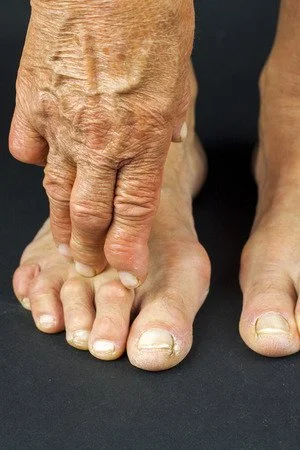Do’s and Don’ts for Dealing with Hammertoes
At NY Foot Health, a podiatric problem that can become quite debilitating is a hammertoe. Hammertoes happen due to a muscle/tendon imbalance usually in the second, third, fourth, or pinky toes. Below are some do’s and don’ts for preventing a hammertoe from becoming disabling.
Do: know your risk for developing a hammertoe. Some factors that increase your chances of having one include trauma or injury to a toe, arthritis, poor footwear choices, and genetics. Hammertoes are also more common in women than in men.
Don’t: wear flip-flops as these cause your toes to have to grip the front of the shoes to keep them on, bending the toe habitually into a contracted position. You should also not wear shoes that are too small and result in your toes being squished up against the front of the shoe.
Do: pay attention to your feet. Hammertoes start out being flexible. You may notice that a toe is displaying a tendency to bend downward in the hammer position, but it can still be straightened when you press on it. Hammertoes are progressive and eventually, the toe will become rigid and unbendable.
Don’t: wait to get your toe checked out if you think it is becoming deformed. Seek a diagnosis and treatment from a podiatrist. Don’t currently have a podiatrist? Find one near you using our online directory. Delaying medical evaluation and care may result in the need for surgery to correct a hammertoe that has become rigidly fixed in the bent position.
Do: use padding for the top of your bent toe while you await treatment to prevent blisters and corns from forming. As a hammertoe progresses it will rub up against the top of your shoes. Stick with styles that are open or made of soft materials and have roomy toe boxes. Ice the affected toe if it’s still painful.
Do: wear your orthotic if the foot doctor has prescribed one. This is a treatment method for hammertoes aimed at controlling muscle imbalance. The podiatrist may also try taping or splinting the toe to help straighten it out and correct the underlying problem.
To learn more about conditions that affect your feet, toes, and ankles, contact us and consider subscribing to our free e-newsletter.

